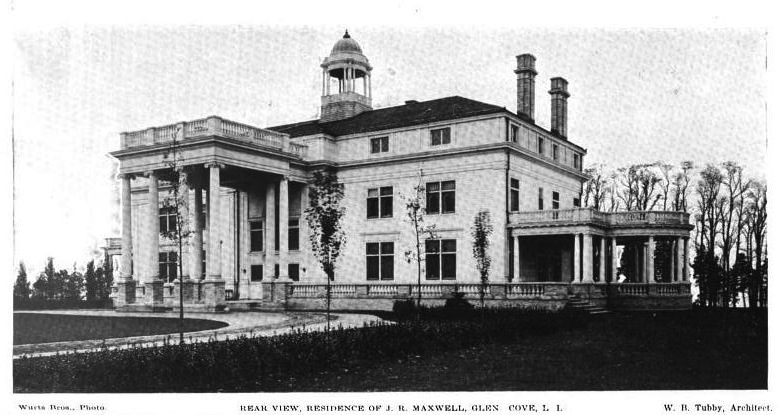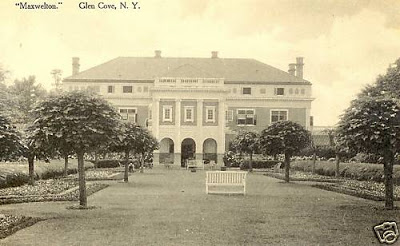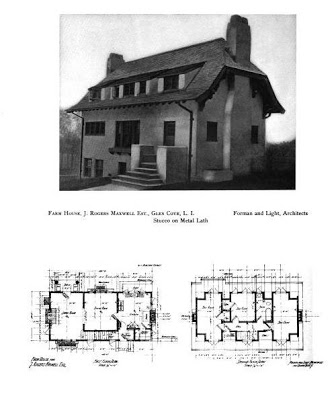1901-1916
The early days : luxurious racing yacht
The Sachem started its journey in 1901, in Wilmington, Delaware. Intended a luxury steam yacht, it was built by the Pusey & Jones Company, a major shipbuilder at the time. The Pusey & Jones shipyard was founded in 1848 and was in activity until 1959. During its operating years they made more than 500 vessels : racing sailboats, sloops, cargo ships, war sloops for the Civil War, warships and luxury yachts. Among them were the Mahlon Betts, the first iron-hulled ship made in the United States, the Volunteer, winner of the 1887 America's Cup, the now fully restored yacht Cangarda, the SS Adabelle Lykes, one of the first Liberty ships, the Jewish immigration ship Exodus, and many others.
photo courtesy of Bill Medford.
Above : The Pusey & Jones Corp. shipyard in 1887. It is bordered by the Christina River. Originally, Joshua Pusey and John Jones founded a plant and provided general machinery works, that later incorporated a boiler shop and a foundry, but also a papermaking department. During ww2, they mostly built cargo ships for the U.S Maritime Commission, and after the war, they shifted all their activities to paper making, before closing in 1959.
PHOTO FROM ROBERT B. MACKAY'S "GREAT YACHTS OF LONG ISLAND'S NORTH SHORE" P.45
The successful American businessman
The steam yacht that would become the Sachem was ordered in 1901 under the name of Celt by the famous businessman John Rogers Maxwell from Manhattan. He was one of the wealthy figures of the late XIXth century, earning huge amounts of money, as there was no taxes on property and earnings then.
Right : Rare portrait of John Rogers Maxwell Sr., born November 20, 1846.
John Rogers Maxwell, millionaire of the Golden Era, had a stunning mansion and gardens at Glen Cove, on the fashionable coast overlooking Long Island Sound. The estate was built in 1898, had a oversized cupola and a frontage on Hempstead Harbor. Surrounded by 27 acres of landscaped greenhouses and gardens, the mansion was though, remodeled. The dependencies had a touch of Irish architecture, due to Maxwell’s Irish origins. (Hence the yacht being named Celt !)
Below are views of this showplace called ‘Maxwelton’, including interiors were lived the man and his family. Note the advertisement on the last slide, is when in 1936 the mansion was sold due to the Great Depression.
John Rogers Maxwell Sr., was educated at the Polytechnic Institute of Brooklyn. He became a true american-spirited businessman of the nineteenth century, his activities (including banking, brokerage and insurances, railroad and industrial assets management) had made him an esteemed and leading figure of the New York Stock Exchange. He was a member of the Board of Managers of the Delaware, Lackawanna & Western railroad ; Director of the Durango Central Railroad Company ; chairman of the Executive Committee of the Central Railroad of New Jersey ; and president of the Atlas Portland Cement Company from 1899 until the illness which preceded his death. The Atlas Portland Cement company is known for having supplied the materials for the construction of the Panama Canal and the Empire State Building.
Right : A plaque in Northampton, Pennsylvania, commemorating the legacy of the now defunct plant once owned by the ship’s first owner.
The construction of the Celt
The construction of the Celt, that would later become the Sachem, started by the laying of the keel at the end of 1901, at the Pusey & Jones shipyard in Wilmington. The steel-made ship was the hull number #306.
Photo from hagley museum digital archives, Pusey & Jones collection 72350_0866.
One hundred vertical frames were added on the keel in winter 1901, as in the picture on the left. It shows the construction of another yacht, Lydonia II, in 1911. However in 1901, the same technics were used by workers, allowing to build large boats on a slipway. The Celt was made with a robust steel by Pencoyd Iron Works, later absorbed by Carnegie Steel then US Steel, a name that was the best guarantee of quality at the time.
By May 1902, exterior steel plates were riveted on the frames. The yacht's engine was installed — a massive four-cylinder, Triple-Expansion steam engine designed by John W. Sullivan, fed by two Almy water tube coal boilers. This would give the engine the capability of delivering 1200 shaft horsepower and a speed of more than 15 knots. The boilers had a reserve of 42 tons of bunkered coal on the two sides of the lower deck.
Deck beams were riveted, followed by auxiliary machinery, shaft, pumps, planked decks, in that order.
The yacht was as large as 186 feet (56 meters) long overall and 170 feet (51 meters) at waterline, 24 feet wide, 12 feet 5 inches deep and about 25 feet high from keel to top of deck — without the heigh of the masts and smokestack.
The construction on the slipway took only five months after which the vessel was christened and launched as the Celt, in the Christina River right by the shipyard, on April 12th 1902. The christening ceremony was sponsored by Miss Elizabeth Hunter Pusey. The ship was towed to the shipyard's wharf for the installation of fittings and furnitures : interior and exterior were usually finished after official launching.
Below : the Celt at wharf after launching, in Wilmington, Delaware, circa May 1902. The upper deck and roof is not finished, some controls and ventilators are to be installed. Note the two men who are painting flowery details on the prow. These yacht-building techniques were typic of the time.
PHOTO FROM LIBRARY OF CONGRESS PRINTS & PHOTOGRAPHS DIVISION, IN THE GEORGE GRANTHAM BAIN COLLECTION.
Designed by Henry C. Wintringham, a famed yacht designer at the time, the magnificent vessel originally contained two deck houses, visible on the previous picture, made of carved mahogany wood and two masts made out of Oregon pine. There were 9 furnished and accessorized staterooms, which were also finished in richly carved mahogany, and had adjoining bathrooms with green tilling and mosaic floor. One was for the steward, another for the cooks, two for the crew, one for the owner, three for the guests, and the captain's room on the rear deck house. The Celt was equipped with modern plumbing and electric power throughout, had ample light and air, electric fans fitted to the portholes, plus in every state room : an icebox, a large berth, a chest of drawers, a dressing table and a wardrobe. Later, according to testimonies, guests found the yacht very pleasant and luxurious. In a remarkable time the workers delivered the yacht to its owner, John Rogers Maxwell, who paid a total sum of $250,000 for the construction of his new yacht. That equals 7 million $ today !
PHOTO NH 102169 FROM U.S. NAVAL HISTORICAL CENTER.
Above : The Celt after completion, at anchor, most probably in may 1902 during trials near the shipyard.
Below : This view follows the above by minutes, if not seconds. Steam engine is on for trials and emitting smoke.
Photo from Hagley museum digital archives, Pusey & Jones collection.
PHOTO FROM LIBRARY OF CONGRESS PRINTS & PHOTOGRAPHS DIVISION, IN THE GEORGE GRANTHAM BAIN COLLECTION.
Above : The stunningly elegant Celt steaming around Long Island, circa 1903. Note the clipper bow, still recognizable more than a century after.
As an experienced yachtsman and owner of notable racing yachts, — He owned at least 27 boats from 1865 to 1910, mostly sailing schooners, and designed some of them himself — John Rogers Maxwell, also a long time member of the Atlantic Yacht Club and the Corinthian Yacht Club, intended to use the Celt around New York Bay and Long Island Sound as a pleasure craft, a tender for his sailing yachts… It was also a perfect summer home. The Celt was the flagship of his racing fleet and one of the emblems of New York yachting, steaming along with Cornelius Vanderbilt's North Star and Alva, J.P. Morgan's Corsair III, John Jacob Astor's Nourmahal, Theodore Roosevelt's Mayflower, although much smaller in comparison. Furthermore, the Celt, being a typical American turn-of-the-century boat, was considered by some as the toast of the whole New York coastline for nearly a decade.
Below : The Celt following a schooner race in 1903.
According to The Rudder, a yachting magazine, in two seasons of constant use, the yacht had quite fulfilled all expectations of both owner and designer.
Maxwell's racing team won the King's Cup in 1907 in a sailing yacht ironically named Queen. As on the photography above, the Celt was often present at these races, at many events of the high society and the East Coast yacht clubs. It was part of the maritime wealth of America, aside from the financial wealth of its upper crust.
Below : Newspaper articles recording the life of the Celt in its early days. Both are from 1910.
End of the “Golden Era”
Below : the Celt in Upper Bay in 1910, soon before Maxwell's death. Note the important traffic in the background.
PHOTO ddf_0229 FROM NYC DEPT. OF RECORDS. Courtesy NYC Municipal Archives.
Like the yacht's previous owner, Manton B. Metcalf Sr. was also an industrialist and had a mansion on the New Jersey coast. He worked and developed the leader company in the New England (Rhode Island) textile industry, which was producing and selling woolen products since the Civil War. The Textile man was also an art collector with civic, social and philanthropic activities : he donated Chinese porcelains, Greco-Roman artifacts and paintings to local museums, and most of his 11 000 000 $ fortune to his wife, sons and the local community. Manton Bradley Metcalf had a rather prodigious family past : the Metcalf family is indeed one of America's oldest family, and Manton's oldest known ancestor was a British immigrant named Michael Metcalf, born in 1586, who came in America in 1637 to avoid religious persecutions. His descendants, although not numerous, have figured prominently in the history of Rhode Island and south-eastern Massachussetts for two and a half century. The Metcalf family was opulent, appreciated, and their way of life between the Wars was qualified "a lifestyle that may never be equaled ".
Below : Rare portait of Manton Bradley Metcalf Sr., circa 1921, which would be few years before his death.
PHOTO FROM "HISTORY OF AMERICAN TEXTILES : WITH KINDRED AND AUXILIARY INDUSTRIES"(ILLUSTRATED), PAGE 288, BY FRANK P. BENETT, 1922
Above : A park is named after Manton Metcalf, on 556 Valley Street, Orange, NJ. One of his old buildings is also named in his honor.
Around 1913-1915, few record of the ship are found. Manton Metcalf had the yacht thoroughly overhauled in 1914, the ship was 12 years old and as reliable as in 1902 ; at this time, the Sachem’s captain was Emil J. Holtz, and the Chief Engineer was Frank Dougherty.
But in 1914, while the ship was often seen along Long Island and Rhode Island Sound, Europe entered a War, and after three years, US had to involve directly in the conflicts. 1917 was to become the most historically important year for the Sachem...






















